Back in the glass drivers cabin of the local bus on the way to Udaipur I was pleased to see this particular driver maintained his cabin like a medical practice. It was spotless, and he would not tolerate shoes on seats and litter. He was a great driver as well, much more controlled than the others, although he did like to roll his chewing tobacco whilst driving in the fast lane. The man seated next to me kept buying him fruit and water and this only seemed to increase his notion of his self importance. Something I have noticed and find in a lot of bus and van drivers in developing countries.
The road to Udaipur was great, new, level and a well maintained highway
. As we approached the city, the dust and the shanty towns emerged, and it was this point I started to feel lousy again, but this time with a fever and violent stomach cramps.
At last we arrived at a cramped, dirty and very busy Udaipur Bus Terminal in the new town. I grabbed a tuk tuk and went straight to the hotel. I was still feeling unwell with painful cramps as we negotiated the narrow lanes at the start of the old city and made our way down to the lake front. Despite being unwell, I was able to appreciate this old sector, with its winding streets, over hanging shops and steep inclines, which suddenly drops down to the lakeside. And what a lake, shimmering turquoise blue in the early afternoon sun.
Satya at Hotel Aashiya Haveli checked me in and then explained “we have upgraded you as the room you wanted (the cheapest) is still busy
.” Psool pronounced ‘fool’ (unfortunately) carried my bags up to the room and settled me in. He also offered to take me to the local chemist or a doctor, which was also kind. The room was beautiful with coloured glass in high ceiling windows. It was a deluxe heritage room overlooking the lake, with great views of the palace and a bay window chair. However it was unfortunate that I could not appreciate these attributes and all I wanted was to retreat to bed.
This was obviously Delhi Belly, and in the early evening I went with Psool to his chemist, who turned out to be brilliant. “We locals just use him and don't bother with the doctor, as his is better and cheaper. Within minutes I was on a course of antibiotics with some painkillers. A few hours later, I felt better, but still had the cramps but not bad enough to put me off dinner.
The next day, was even better and I had breakfast on the terrace, overlooking the fabulous lake
. I had to move out of the upgrade room, and into the cheap one I had booked with no lake view. It was quite a bit smaller, but it was fine. I relaxed most of the day, decided to stay a day longer and planned my future travels.
By Saturday, I was still not 100%, but feeling much better and eating normally, so I started to explore the old town for the first time. I visited some artists galleries, to see the traditionally miniature paintings for which this area is famous. The work on the whole was interesting, but not too my taste until I met Sanjay Soni in his back street studio called Paliwal Arts. He was working traditionally, with tiny squirrel hair brushes, but doing a more modernist take on traditional scenes and animals, and I loved them. I also got roped into visiting a tailor’s shop (the Blue Marine - naturally) which I did not want to do, but ended up accepting a free tea from Mukesh. I soon realised I had very much underestimated Mukesh who made wonderful suits for clients that included Judy Dench and Maggie Smith (with photos to prove the point)
. Although I explained I would not buy anything we became friends and he gave me some good recommendations for travel.
The first thing he suggested was a visit to Sunset Point, which he said was a 15 min walk away. Well obviously Mukesh walks like I run, as in the end I had to flag down a tuk tuk or miss the sunset. The journey involved a cable car ride to the top of he hill, which was efficient and quick. The viewing area was great with a good view of both islands, Jag Mandir and The Lake Palace on Jag Niwas and the City Palace on the lakefront. Whilst the sunset was not the greatest, the scene was still spectacular and I waited there until complete darkness and the city lights were totally illuminated. As I watched, Lake Pichola changed colour several times and did eventually take on this sapphire glow, for which it is justifiably famous.
The next day I felt fully recovered and able to take on the City Palace. For this I followed another of Mukesh’s recommendations, and took his guide friend, Ricki. Despite his late arrival Ricki was an inspired recommendation and he was excellent. He totally illuminated the visit for me in the ways other guides in other cities had previously failed. Actually several days later when I visited subsequent palaces and forts in Rajasthan, many of the designs and architecture Ricki had explained made complete sense at these new sites
. The City Palace was exceptional. Having been somewhat underwhelmed so far by many of sites I have seen in Rajasthan, this totally exceeded my jaded expectations. Built in in the 16th Century this was the capital of the Mewar Empire since 1567 when the capital was relocated here from Chittaurgarh after the large fort there was sacked for a third time. The fortifications and design of the palace was unique (to my mind) and interesting, but it was the palace itself and its intricate stonework and design that was most impressive. It was also in great condition and well maintained as the royal family still occupies part of the palace. It took several hours to get around and whilst the heat was excessive, the views of Lake Pichola were continually awe inspiring.
Feeling somewhat exhausted after that visit, I opted for and an extended lunch (still reluctantly on the western food) in one of the cafes lining the streets down from the palace. During my lunch the heavens opened and the rain just poured down for some three hours. I told the staff I though that the Monsoon had finished, “it should have done last month,” they answered. I also thought I should thank Mukesh for his guide recommendation, so i stopped at his shop after the deluge and he mentioned that there would be a festival that afternoon and evening at the waterfront temple down by the bridge. As the rain had disappeared, I thought I would change plans and headed off to the temple. Each local temple duly arrived in procession, followed by its worshippers and headed down to the waters edge. Fruit was thrown into Lake Pichola and red dust thrown over the worshippers and any tourists standing next to the ceremony. All of this was accompanied by loud Hindi music. The most interesting aspect was watching the women viewing the procession from the temple first floor.
The next mourning it was off to Dungarpur, about 100 kms south of Udaipur. Dungarpur (founded in the 13th Century) is a little place dominated by large palace ruins situated above an old town in a valley, which was apparently untouched. The old city then spills out of the valley onto the shores of a large lake noted for its birdlife, where the then Maharaja Singh of Dungarpur relocated his palace in the 19th Century from the ruins in the old town. His son, the current Maharaja lives there now and has turned the area into an eco palace, with a beautiful temple, and converted a wing of the palace into a heritage hotel and it was here, that I planned to stay. It sounded beautiful, and as it was not in the Lonely Planet, I decided it was a must see.
The two hour bus there was the most packed so far, with people on the roof (now illegal in India - I have been informed) and people dangerously hanging out of the doors. I was pleased to reach Dungarpur, which initially appeared a monumental disappointment. It was filthy, with rubble and garbage thrown everywhere smelling foul. It also worrying seemed to have a disproportionately high number of medical centers on the roadside. But as I exited the bus station in a tuk tuk, we left this hellish new town and entered the old town and were soon entering the Udai Bilas Palace.
Well chalk and cheese! The palace was breathtaking in its tranquility, beauty and wildlife. Loving adorned with art deco furniture, stuffed relics from the Maharaja’s hunting days and highly polished marble floors it was heavenly. “How many guests do you currently have?” I asked the porter. “You are the only one” replied the porter, “just you and Maharaja Singh”. My room was an ensuite in the old servants quarters overlooked the new palatial swimming pool and I was quickly down there in this sweltering heat. The pool was an infinite pool overlooking the lake, the lilies and a beautiful floating Hindu lake temple about 50m off shore. It was sure hot and I staked out by the pool content with the scenery and the abundant birdlife (including a par of nesting white necked storks just above my bedroom.
That evening I made my way through the rest of the Udai Bilas Palace to the extraordinary restaurant for dinner. On the way I passed the huge private courtyard, built in the 1940s, containing a four story palace built within a “pleasure pool” (whatever that maybe - the mind boggles)! I read on the website, the restaurant was communal dinning at one long table for the guests, so it seemed like a long solitary dinner. I was not prepared for the table though, it was in effect a very long marble table within which was set a long narrow jacuzzi and some floating artificial ducks. Chairs were arranged along side, with twelve settings ( although I never met the other eleven). The food was a buffet meal, delicious and only Rajasthani, explained in depth by the staff.
The first night I slept so soundly despite the heat, after a night swim. The next morning I was up at dawn for a bird trip with one of the staff who was a member of the local Bihar tribe and an avid bird watcher, the manager told me. He sure was and it was great. After breakfast around the jacuzzi dinning table, it was off to the old town and the 13th Century Juna Mahal Palace. The care taker (“Maharaja Singh told me you were coming”) was there to welcome me and guide me round and he also explained that the profits from Udai Bilas were donated to the palace restoration and to the production of tourist information placards. The Palace turned out to be a revelation. Not only in its design and restoration, but with seven floors each added by a different royal king, there was an abundance of different architecture and paintings. I was (naturally) the only one there and with a private guide and the place to myself, I started feeling somewhat royal. The paintings were exquisite, including the renowned ones illustrating the Karma Sutra painted in the 15th Century and hidden from view in the 18th century behind a false wall. At seven stories high the roof afforded excellent views of the old town which I elected to walk through, on my return to the palace.
This old town was nothing like the towns I had so far seen in Rajasthan. Quite, full of ordinary people going about their daily business. None of the heaps of rubbish and excrement I was starting to get accustomed too. Even the cows ambling through the green painted town appeared happy. Everyone smiled and not a coke can or tourist heckler in sight. I loved it.
Back at the pool in the Udai Bilas, I got a message from the birdwatching member of staff that he would escort me on another longer trip before I would take me to meet the Maharaja in the Dungarpur Mews. Off we went again in the evening light, through the woods at the back of the estate, tracking all manner of birds like woodpeckers, ibis, herons, storks and (my favourite) kingfishers.
Afterwards he left me at the Mews, where I met the Maharaja. He was in his fifties, tall with a bush of grey hair, a big smile and a vaguely aristocratic aura. I guessed he was English educated and he was incredibly enthusiastic about birds, family history, palaces, gardens and automobiles. I could converse on some of these but on cars... Well the mews was full of his collection of antique cars ranging from 47 Packard , 51 Chevy pick-up , 1942 Willys Jeep , 1939 Fiat 7 seater saloon , Sl 380 1885 and Sl-320 of 1994 , Jaguar XJS 1985, a 1966 Volkswagen Beetle, to name but a few. All in perfect working order, “which I rally against the Maharajas of Udaipur and Jodhpur at various times during the year.” At the end of the mews he built a huge bar, where you could relax in ferocious air conditioning with his collection of motor memorabilia, his Scaletrix and his motorcar videos. I could only think how jealous my Uncle Terrance would be. He offered some food and ordered some delicious peanut masala and we talked about his collection of Murano glass. He also mentioned his estate, his kitchen garden, his organic farm with rare chicken breeds and this palace. Fascinating.
That night I met his personal Librarian, who was archiving his family documents. She was a modern independent Indian student from Orissa with a doctorate and an outgoing personality. I talked about my experiences and the Rizzardi Family in Verona, as the parallels were there. Dinner was again a solitary experience on the jacuzzi table with twelve place settings.
The next day I was up early as I had a long six hour bus journey to Ranakpur with a change in Udaipur. It was a shame to leave Dungarpur, quite simply a very special place and an experience that will long live in my memory. After a dodgy beginning Rajasthan was starting to live up to its reputation.
Maharajas, Lakes, Vintage Cars and Birds
Sunday, September 15, 2013
 Udaipur, Rajasthan, India
Udaipur, Rajasthan, India
Other Entries
-
1Getting ready, jabs, doctor, backpack set up etc
Jun 1592 days prior Blagdon, United Kingdomphoto_camera2videocam 0comment 0
Blagdon, United Kingdomphoto_camera2videocam 0comment 0 -
2The Final Week
Jun 2978 days prior London, United Kingdomphoto_camera2videocam 0comment 0
London, United Kingdomphoto_camera2videocam 0comment 0 -
3Indian Visa Chaos and Arrival in Colombo
Jul 0770 days prior Colombo, Sri Lankaphoto_camera1videocam 0comment 6
Colombo, Sri Lankaphoto_camera1videocam 0comment 6 -
4Colombo, City of Curries and Cricket
Jul 1067 days prior Colombo, Sri Lankaphoto_camera3videocam 0comment 0
Colombo, Sri Lankaphoto_camera3videocam 0comment 0 -
5The Sri Lanka cloud forest.
Jul 1364 days prior Nuwara Eliya, Sri Lankaphoto_camera2videocam 0comment 3
Nuwara Eliya, Sri Lankaphoto_camera2videocam 0comment 3 -
6A Traditional Plantation House
Jul 2057 days prior Galagedera, Sri Lankaphoto_camera2videocam 0comment 1
Galagedera, Sri Lankaphoto_camera2videocam 0comment 1 -
7Baby Elephants, water & mud!
Jul 2453 days prior Giritale, Sri Lankaphoto_camera4videocam 0comment 6
Giritale, Sri Lankaphoto_camera4videocam 0comment 6 -
8Traffic Jams and Great Birdlife in National Parks
Jul 2552 days prior Tissamaharama, Sri Lankaphoto_camera4videocam 0comment 0
Tissamaharama, Sri Lankaphoto_camera4videocam 0comment 0 -
9Dinner Parties, Train Sets & Stilt Fisherman
Aug 0145 days prior Galle, Sri Lankaphoto_camera5videocam 0comment 1
Galle, Sri Lankaphoto_camera5videocam 0comment 1 -
10Negombo & Bangkok & Prickly Heat
Aug 0442 days prior Bangkok, Thailandphoto_camera3videocam 0comment 2
Bangkok, Thailandphoto_camera3videocam 0comment 2 -
11Phnom Penh, Palaces, Genocide & Pajamas
Aug 0937 days prior Phnom Penh, Cambodiaphoto_camera4videocam 0comment 2
Phnom Penh, Cambodiaphoto_camera4videocam 0comment 2 -
12More Elephants, Hoeing & Hello Kitty
Aug 1630 days prior Sen Monorom, Cambodiaphoto_camera3videocam 0comment 1
Sen Monorom, Cambodiaphoto_camera3videocam 0comment 1 -
13Prasat Preah Vihear, Soldiers & A Bordello
Aug 1828 days prior Preah Vihear, Cambodiaphoto_camera4videocam 0comment 0
Preah Vihear, Cambodiaphoto_camera4videocam 0comment 0 -
14Angkor Wat, orphans & getting wet.
Aug 2422 days prior Siem Reap, Cambodiaphoto_camera3videocam 0comment 0
Siem Reap, Cambodiaphoto_camera3videocam 0comment 0 -
15Tata, Trains, Taxis and Rickshaws. Chaos & Theft
Aug 3115 days prior Kolkata (Calcutta), Indiaphoto_camera6videocam 0comment 0
Kolkata (Calcutta), Indiaphoto_camera6videocam 0comment 0 -
16The Pink/Orange City, Masala Tea, Amber Fort
Sep 087 days prior Jaipur, Indiaphoto_camera4videocam 0comment 1
Jaipur, Indiaphoto_camera4videocam 0comment 1 -
17Bundi, Dust, Forts and the real Rajasthan
Sep 123 days prior Bundi, Indiaphoto_camera5videocam 0comment 0
Bundi, Indiaphoto_camera5videocam 0comment 0 -
18Maharajas, Lakes, Vintage Cars and Birds
Sep 15 Udaipur, Indiaphoto_camera5videocam 0comment 0
Udaipur, Indiaphoto_camera5videocam 0comment 0 -
19Big Moustaches, Street Food & Big Forts
Sep 205 days later Salawas, Indiaphoto_camera6videocam 0comment 0
Salawas, Indiaphoto_camera6videocam 0comment 0 -
20Psychotic Cows, Nagas, Omar Sherif & Desert Forts
Sep 2611 days later Jaisalmer, Indiaphoto_camera4videocam 0comment 0
Jaisalmer, Indiaphoto_camera4videocam 0comment 0 -
21Special Blog: Seva Ram & Jitu Solanki
Oct 0116 days later Bikaner, Indiaphoto_camera5videocam 0comment 0
Bikaner, Indiaphoto_camera5videocam 0comment 0 -
22Public Speaking, Painted Havelis and lots of rats!
Oct 0419 days later Mandawa, Indiaphoto_camera8videocam 0comment 0
Mandawa, Indiaphoto_camera8videocam 0comment 0 -
23National Parks, Road Rage, Drunks & a Tiger!
Oct 1227 days later Bharatpur, Indiaphoto_camera4videocam 0comment 2
Bharatpur, Indiaphoto_camera4videocam 0comment 2 -
24Mosques, Cremations, Festivals & Dhal
Oct 2136 days later Varanasi, Indiaphoto_camera7videocam 0comment 0
Varanasi, Indiaphoto_camera7videocam 0comment 0 -
25Nepal, trekking, Cold, Everest and Gurkas
Oct 2843 days later Kayakatta, Nepalphoto_camera4videocam 0comment 0
Kayakatta, Nepalphoto_camera4videocam 0comment 0 -
26Karmi Farm, Sherpa Tenzing, Mr Happy and Momos
Nov 0551 days later Darjeeling, Indiaphoto_camera4videocam 0comment 0
Darjeeling, Indiaphoto_camera4videocam 0comment 0 -
27Rhinos, Armed Guards & Posing For Photos
Nov 1460 days later Kaziranga National Park, Indiaphoto_camera5videocam 0comment 0
Kaziranga National Park, Indiaphoto_camera5videocam 0comment 0 -
28Spiders, The Kharsi, Archery and Bad Driving
Nov 2066 days later Cherrapunji, Indiaphoto_camera5videocam 0comment 0
Cherrapunji, Indiaphoto_camera5videocam 0comment 0 -
29Monpas, Sumo, Yak Butter Tea & Indian Army
Nov 2470 days later Tawang, Indiaphoto_camera7videocam 0comment 0
Tawang, Indiaphoto_camera7videocam 0comment 0 -
30Uncles, Nuns, Bridges, Red Rice and Gompas
Nov 2773 days later Sakti, Indiaphoto_camera5videocam 0comment 0
Sakti, Indiaphoto_camera5videocam 0comment 0 -
31Buddhist Festival, Feral Dogs, Exploding Cakes
Dec 0177 days later Bomdila, Indiaphoto_camera6videocam 0comment 0
Bomdila, Indiaphoto_camera6videocam 0comment 0 -
32A Horror Journey
Dec 0379 days later Tezpur, Indiaphoto_camera4videocam 0comment 0
Tezpur, Indiaphoto_camera4videocam 0comment 0 -
33Hornbill Festival, Nagas & Nagaland
Dec 1086 days later Kohima, Indiaphoto_camera6videocam 0comment 3
Kohima, Indiaphoto_camera6videocam 0comment 3 -
34Pied Pipers, Hard Beds, Ao and Chang tribes
Dec 1894 days later Mokokchung, Indiaphoto_camera7videocam 0comment 0
Mokokchung, Indiaphoto_camera7videocam 0comment 0 -
35Battles, Monoliths, Street Photography, Home
Jan 01108 days later Dubai, United Arab Emiratesphoto_camera6videocam 0comment 0
Dubai, United Arab Emiratesphoto_camera6videocam 0comment 0 -
36Athens, Bristol, Doctors and Rain - lots of rain
Jan 15122 days later Athens, Greecephoto_camera2videocam 0comment 0
Athens, Greecephoto_camera2videocam 0comment 0

 Udaipur, Rajasthan, India
Udaipur, Rajasthan, India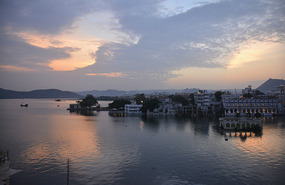
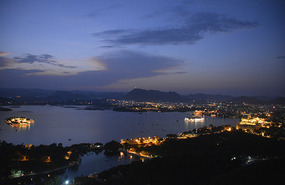
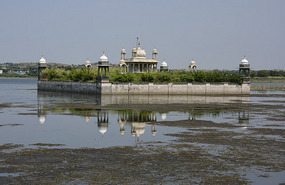
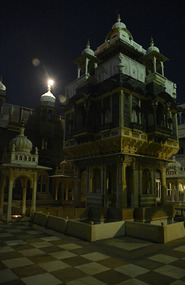
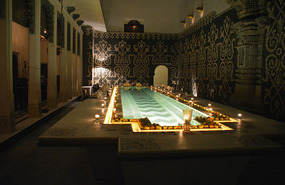








2025-05-22